7 Tools to Level Up Your Content Promotion Game
We live in the information age, so naturally, there is too much content to read out there!
That’s incredible for a reader who’s spoiled for choice, but where do we humble writers begin?
Content is the cornerstone of inbound marketing and we all know how difficult it is to write something worthwhile! So most of our time goes into writing and we don’t leave enough time for its promotion — getting it out to the right audience and building traction. I forgot to mention all of this needs to be done quickly once published. You need to get the timing right, just like baking a cake.
Download Free: A/B Testing Guide
I have an example below from our own blog that shows what impact it may have had, to be honest, we must give credit to the content quality since it may have been different but promotion was done for one and not for the other.
Here’s the comparison:
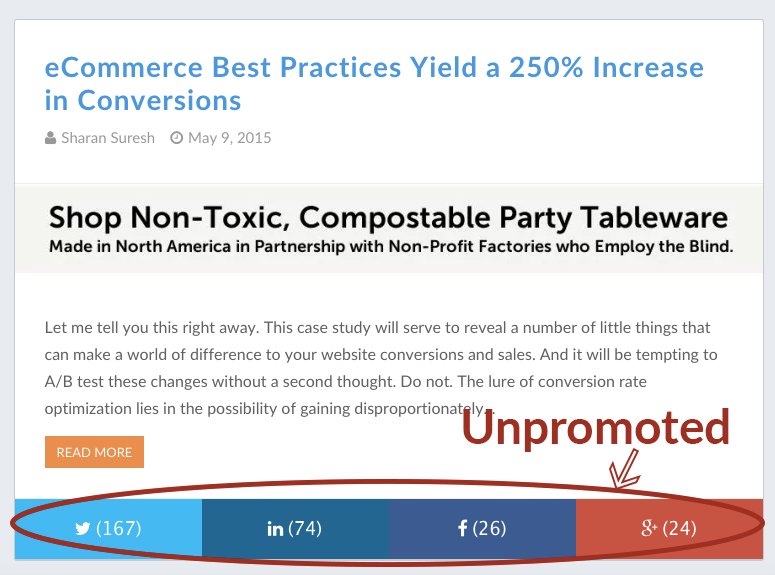
Unpromoted Post
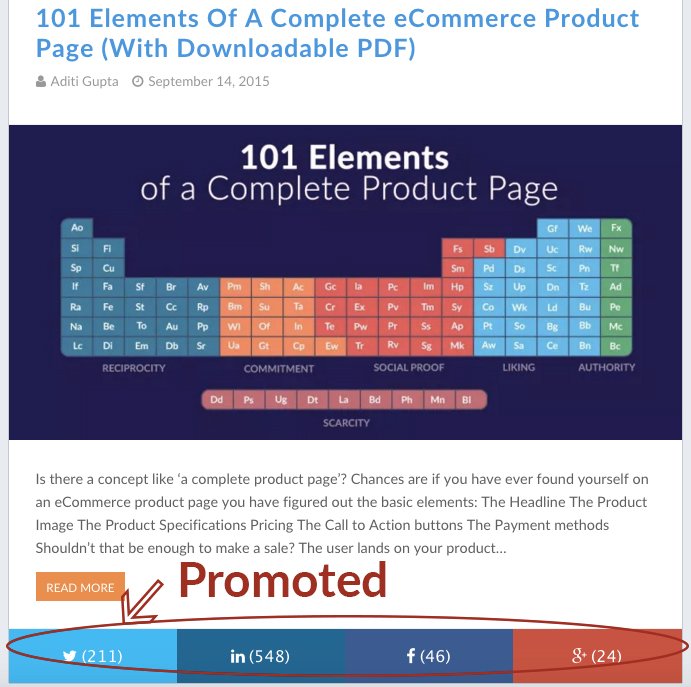
Promoted Post
It’s shown to be an important process that has boosted the traction of a lot of our own posts. I think of it as a nitrous boost for your blog’s journey around the web.
Don’t worry in case you haven’t been able to achieve the same results with your content promotion. Some angels out there have been looking out for us and have spent time and effort to build great solutions for us, I’ve discussed some of those solutions here to help you level up your content promotion game.
Let’s begin:
1) Mailshake.com
This baby is still in the beta stage, its goal is simple; you want to contact your influencers but:
1. You don’t have their email ids and let’s say by some luck you get them,
2. You don’t want to waste time sending individual emails, because response rates for cold emails are very low, so you need to bulk up the number of emails you send. Let’s face it, cold outreach can seem like shooting arrows in the dark.
3. You need to do social outreach too, through LinkedIn, Facebook and Twitter but again, how many tweets will you send out individually?
Mailshake.com (earlier ContentMarketer.io) will help you resolve each of these issues like so:
The first step is to find influencers, you can do so by researching a page that has your relevant influencers mentioned such as a digital marketing event page or a blog post on social media influencers for eCommerce. From here you simply scan the post you want, Mailshake.com does the rest.
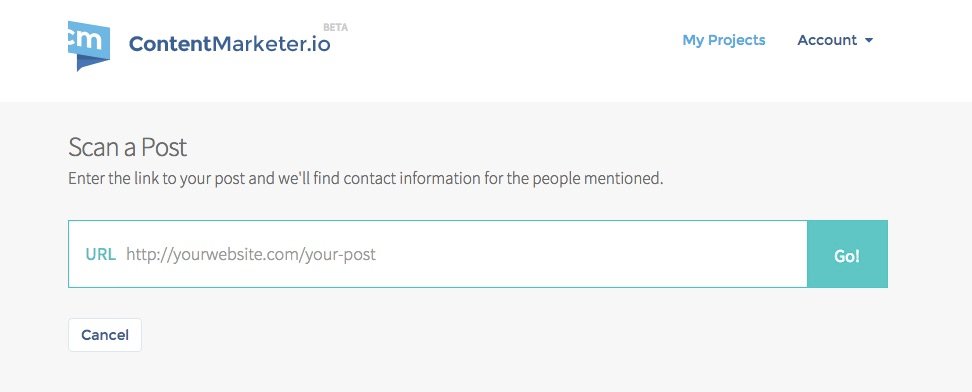
Voila! You’ve got their email ids, Twitter handles, and even contact form URLs; basically, the whole red carpet! (You can even upload .csv files in case you’ve got contact lists.)
You can craft emails (or use inbuilt templates) and reach out to your influencers in batches, after clicking ‘send’ your email campaigns will be tracked for opens and clicks. This is great to gain insight on who is more responsive and learn about who you can contact again.
Similarly, for Twitter, you can tweet out to them or send direct messages.
The screenshot illustrates the interface where the entire process takes place.
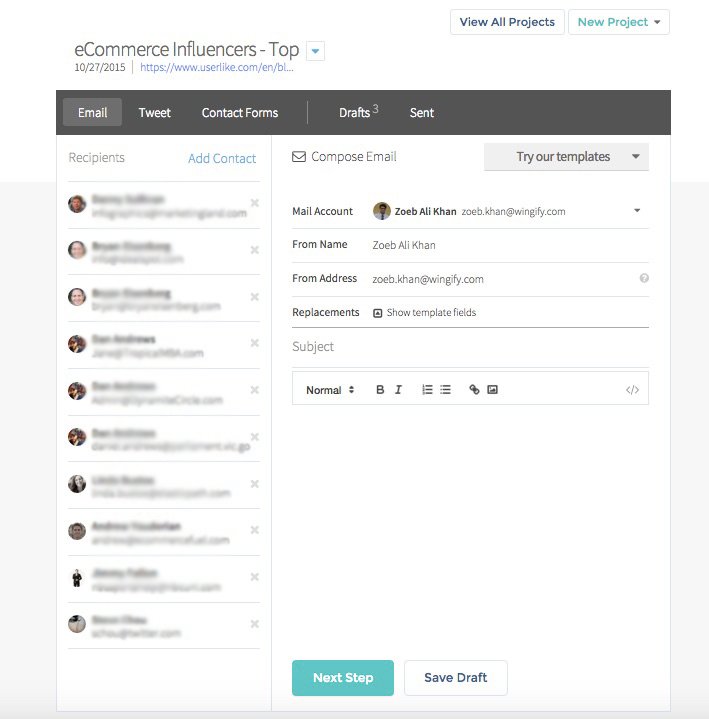
What’s even cooler:
The team is easy to reach in case of queries, they are receptive to your suggestions for the product. Colin from Mailshake.com (who’s a co-founder along with Sujan Patel) helped me out and added an image editor within 24 hours.
Here is the conversation I had:
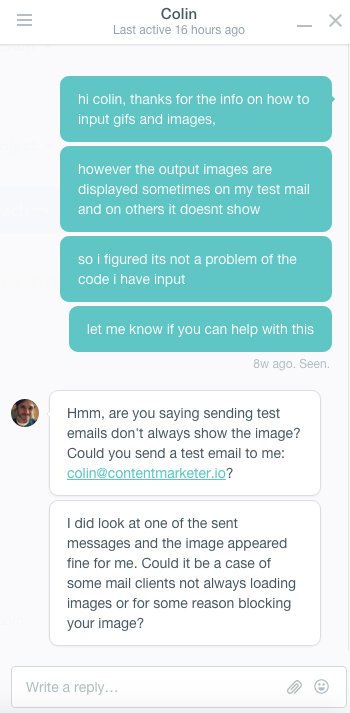
It spoon-feeds the process of cold outreach to influencers and you can export all your data into .csv format so that your boss can be happy with his excel sheets later in the day.
2) Followerwonk
From the great minds of the wizards of Moz, comes this beauty. Followerwonk helps you find Twitter influencers based on keywords in their bios (or profiles), you can compare different users to find which ones are more relevant and useful to your needs – this is perhaps the most vital tool because a focused approach towards promotions is the thumb rule in B2B.
Using Followerwonk is as easy as I dare say, Google search.
Once you’ve got your list, filter them according to the number of followers or tweets they send, or even social authority rank.
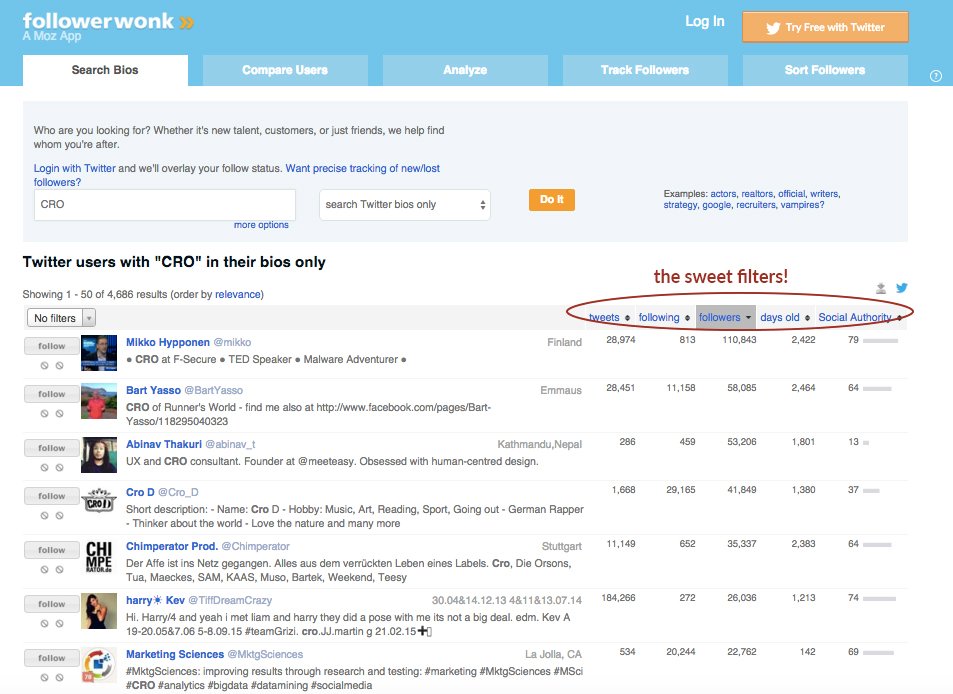
You can even make custom filters based on your Twitter profile that you’ve synced with Followerwonk. For example, contacts who are my followers, and not followed by me can be pulled out. Basically, it gives a whole combination of possibilities with your Twitter handle.
Download Free: A/B Testing Guide
3) Buzzsumo
Let’s begin with an example:
I searched for the “Mobile App A/B testing tool” because it’s a topic I wanted to find what others had written on. Here’s where Buzzsumo comes in.
What does this tool do?
- Search for any topic and it’ll show you the most popular content for that topic.
- Enter a URL and Buzzsumo will show you how much the link has been shared – this tells you how well the topic has been covered and its performance so that you know what is worth writing about. It also helps you avoid repetition by helping you craft a piece that provides distinct value.
- Check out backlinks, so you know which websites to reach out to and expect good news from, or simply find websites that write about similar topics and will be interested in your content. Furthermore, it shows you a list of sharers in the ‘view sharers’ tab.
- Buzzsumo, too, like Followerwonk, helps you find influencers. See the influencer tab on top in the screenshot below:
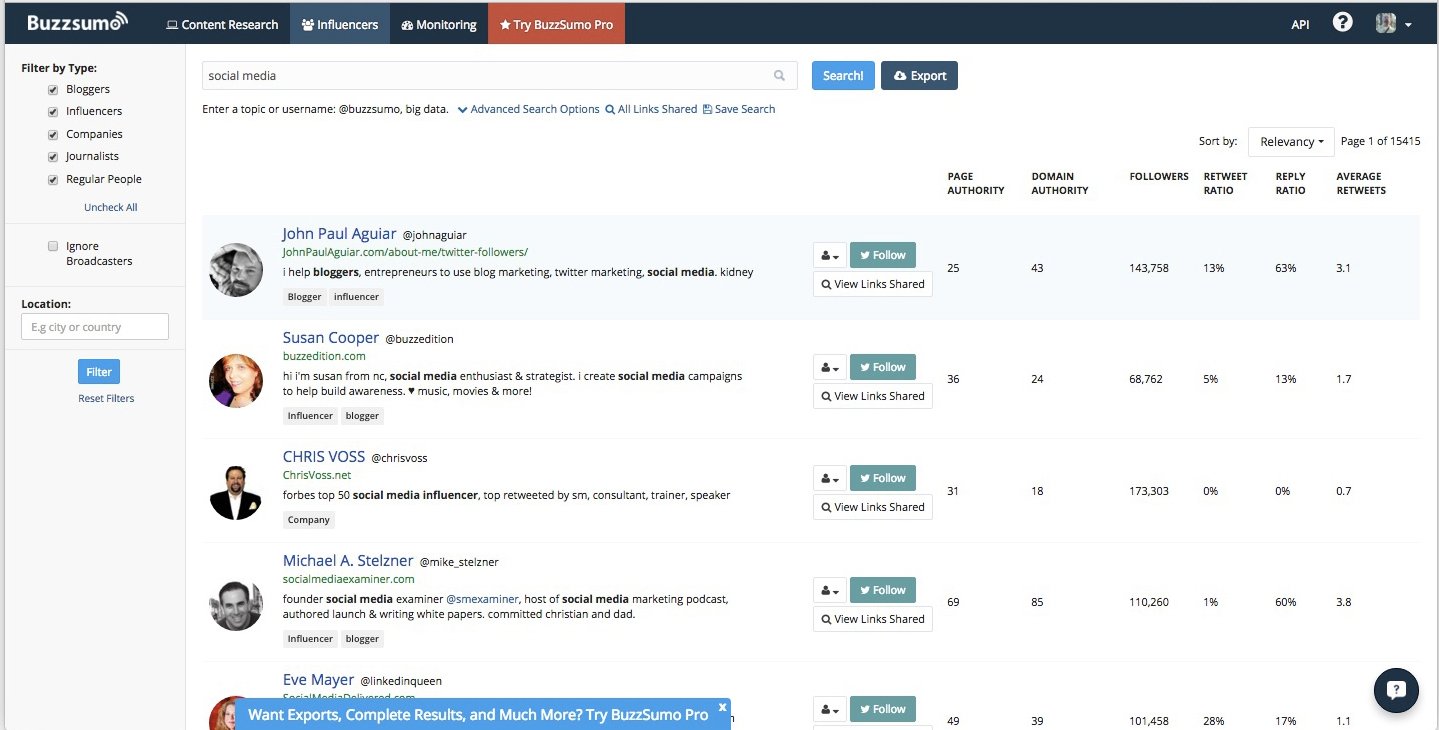
Buzzsumo offers a 14 day free trial for its pro account wherein you can get access to an unlimited number of influencers and posts.
4) Open Site Explorer
It’s all about competitors, and OSE fits the profile perfectly to help with your competitor research.
You use OSE to scan your competitor’s post/pages, posts you took inspiration from, or just about any page. Once scanned, you get the list of inbound links to find backlink opportunities.
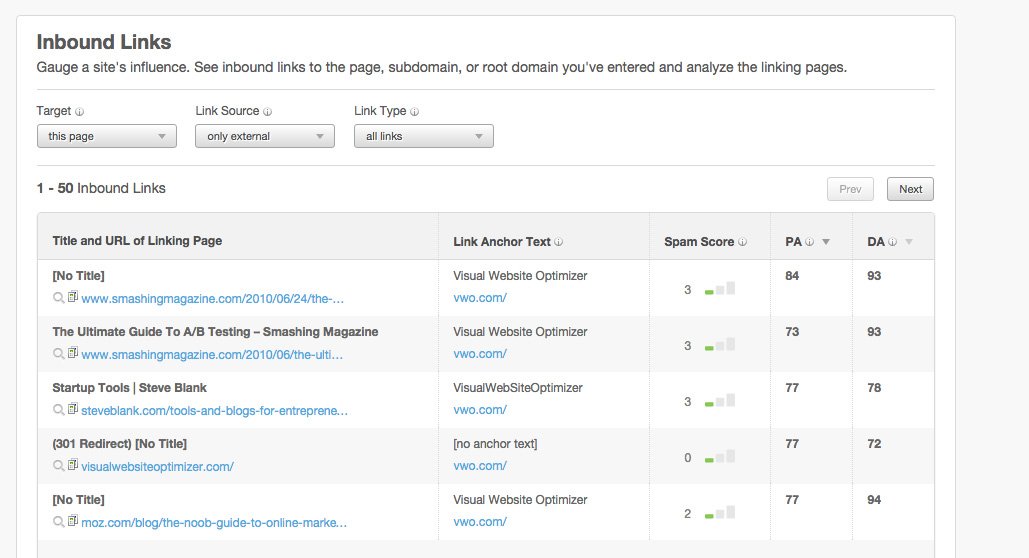
Similarly, if you plug in your own page URLs, OSE provides you with metrics for the links you got from around the web. It’s useful for finding those spam websites that might have linked to you and disavowing them.
In essence, OSE helps you monitor your website’s health and steer clear of bad neighborhoods.
The best way to describe this tool is that it is akin to a flaming torch in a dark span of endless data!
I almost forgot to mention how they constantly update their data adding close to 200 million+ URLS every 60 minutes.
5) Buffer
Buffer makes social media management easy. All of us need to reach out to influencers through Twitter but some constraints we face are tweeting at the opportune time and composing tweets individually.
Buffer lets you schedule and more! The analytics section is super easy to read, with pointers on how many clicks you’ve been getting and even the possible number of followers that will see your tweet. The insights section is available for paid users which is a goldmine, and god knows I’m a sucker for graphs.
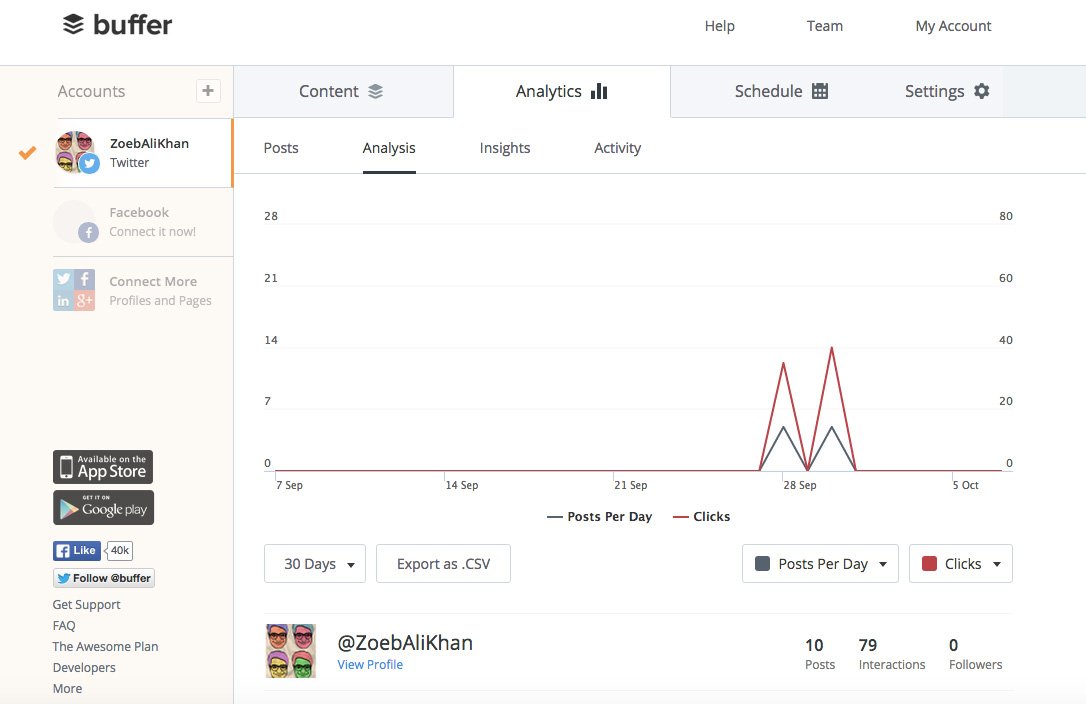
The internet is dark and full of tweets, Buffer sorts them all away! – Cheesy reference but it’s true!
6) Outbrain
Do you care about having your content on premium websites? Yes? Read On!
No? Still read on.
To put it simply, Outbrain is a content recommendation platform that helps businesses and brands acquire more traffic by promoting their content on publisher sites with relevant traffic.
Getting Outbrain is like buying your way into a marketplace all content marketers want to be a part of.
Outbrain uses behavioral targeting to recommend interesting articles, slideshows, posts, photos or videos to a reader rather than based simply on content that may be similar.
The global audience reached by Outbrain each month is 557 million.
Outbrain is currently used by small and large web publishers, media agencies, brand and marketing managers, book publishers, PR companies, start-ups, small businesses, travel, and hospitality companies, and app developers for as low as $15 a day!
Here’s outbrain in action:
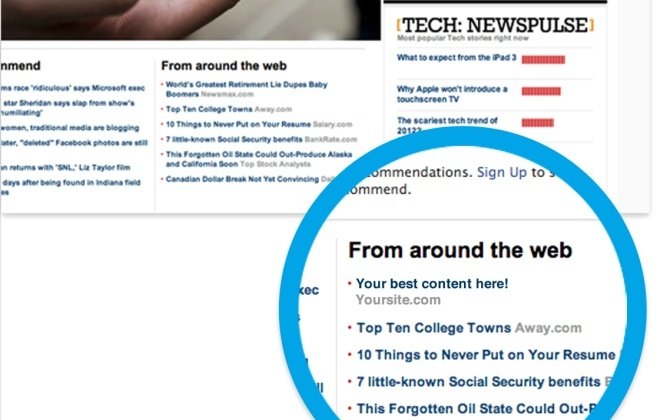
It’s also been known to work better for B2C content or that with broader appeal.
7) Curata
Curata has two platforms on offer the Content Curation Platform and a Content Marketing Platform. First the CCP – a platform that gets you content from around the world and lets you publish it with a single click. Your objective in using this software is to be able to publish more frequently, save time on your research find third-party content, and syndicate it.
Here’s how you can use it:
Search for the kind of content you want such as long form or short form. Then fill in keywords, and Curata gives you a list of posts. Now it’s up to you to decide how relevant it is.
Curata learns what kind of content you are on the lookout for and then begins to recommend the content of a similar kind in the future.
Furthermore, you can set other parameters according to your needs. For example, search only for tweets with the word ‘CRO’ mentioned, or only sources you want such as TechCrunch, and VentureBeat.

Finally, you can publish on various channels (email, social, blog) with one click and schedule how often you want the posts to go out.
Next, the CMP – The editorial calendar is in view of the entire team and can be used in different formats such as a spreadsheet-style for you oldies out there or google calendar style. I was especially impressed by the analytics section, an example of how you can use it: Categorize your posts according to your authors, see which ones are generating you the most revenue, Curata tracks the performance of the post, sees how many leads which came in converted, that is revenue generated through the post. Let’s just say it’ll even be easier for you to spot who to fire and who to give a raise to.
These are the tools I found useful, I’m sure there are more out there. What other tools have you found useful for us content marketers? Reach out to us at [email protected] with your favorite tools!

















